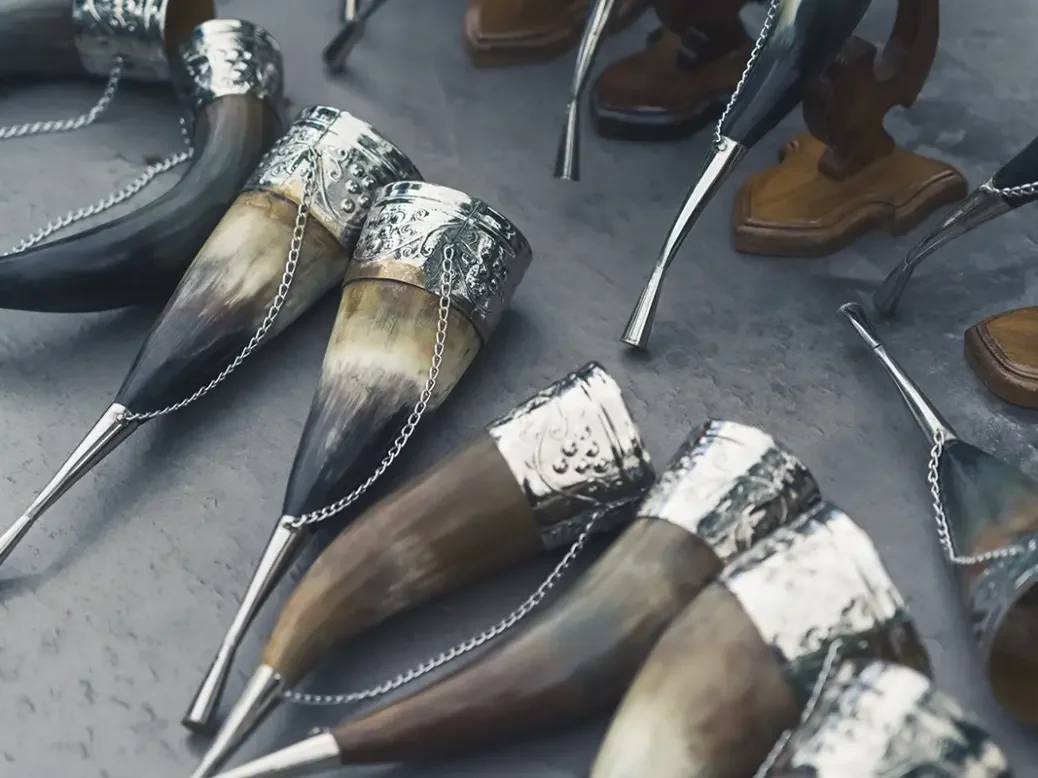
From medieval feats of bibulous derring-do, to downing Champagne in one in Thomas Mann’s The Magic Mountain, Stuart Walton explores the cultural meanings of knocking back wine.
Wine is to be sipped and cherished, contemplated as it is consumed. We all know that. Even the simplest rustic slosh is worth a moment of our attention at the first mouthful, while the most venerable vintage wine is worth analysing through one serving and another, its development with aeration being a constituent part of its performance in the glass.
Knocking back a drink is the brute habit of beer types, the refreshing quaff at the end of a laborious workday or arduous hike, the mere slaking of thirst. Wine drinkers are never stricken with thirst, or if they are, make do with Adam’s ale. Unless put to the extremity of a test.
Knocking back for the team
An annual celebration known as the Meistertrunk (Master Draught) is celebrated on the weekend of Pentecost every year in the medieval town of Rothenburg ob der Tauber in Mittelfranken, the Franconian portion of Bavaria. It commemorates a legendary incident during the Thirty Years’ War. In October 1631, the town was besieged by a massive force of 60,000 Catholic soldiers under the command of General Johann Tserclaes, Count of Tilly. He had given orders for the defiant Protestant stronghold of Rothenburg to be sacked following its surrender.
The story has it that the locals, in an attempt to appease the famously tyrannical commander, offered him a Humpenglas, a gigantic goblet, of the local wine. Just such a goblet may be seen in the Imperial City Museum to this day. With a capacity of around 3.25 liters, or the better part of a gallon, it would have been difficult to hold up, let alone drink from. Tilly disdained to touch it but, on a whim, suggested that if any of the town dignitaries could drink it in one go, he would spare Rothenburg and its inhabitants from fiery destruction. Up stepped Bürgermeister Georg Nusch, the mayor, to take one for the team.
Accounts vary as to how he managed it, but it seems that, through a furiously determined ten minutes of convulsive gulping, Mayor Nusch drained the goblet. Tilly was doubtless riotously amused, and sufficiently impressed to spare the town, whose timbered houses and Lutheran churches survive to this day. It is said that Nusch was comatose for three days. In 1881, a play recounting the story, Der Meistertrunk, written by local glassmaker Adam Hörber, was staged for the first time. Dramatic productions have since been mounted at Pentecost every year, both indoors and im Freien, when Rothenburg’s streets fill with people in medieval costume, and a certain enthusiastic quantity of wine is drunk.
It seems likely that the story is a fable. It receives no mention in the nearest contemporary account of events in Rothenburg, written by Sebastian Dehner in the 1640s. Notwithstanding that, the astronomical clock tower of the 17th-century Ratstrinkstube, the Councillors’ Tavern, overlooking the market square, boasts the later incorporation of a pair of mechanical figures of Nusch and Tilly. They appear in their respective windows on either side of the clock face, on the hour every hour between ten in the morning and ten at night, the mayor lifting a giant flagon to his lips, heroically quaffing for Rothenburg while the hours chime.
Knocking back heroically
When it comes to wine, drinking in one carries with it indelible associations of the heroic. Mynheer Peeperkorn, a kind of Dutch Falstaff figure, one of the late arrivals at the Berghof sanatorium in Thomas Mann’s The Magic Mountain (1924), exemplifies the tendency. On a memorable night of feasting and drinking, he leads the inmates in a Petronian carousal, beginning with three bottles of Mumm Cordon Rouge Champagne. These are served with the full sommelier’s schemozzle of the napkin-wrapped bottle: “The noble foam bedewed the cloth. Every glass rang as the guests saluted, then drank the first one empty at a draught, electrifying their digestive organs with the ice-cold, prickling, perfumed liquid.” At Peeperkorn’s instigation, I ventured to try this trick. The effect is an unearthly seizure of the oesophagus under the sudden impress of effervescence and acidity, somewhere between glorious and painful. Its intoxicating hit is almost instantaneous.
The custom of knocking back endured through the preservation of the antique tradition of drinking horns, once the actual horns of ruminant mammals like cattle and bison. With the revival of Viking cultural tropes during the Romantic period, drinking horns became popular again among German student fraternities of the 19th century, and have remained a ceremonial tradition in Georgia, where they are known as kantsi. Nobody who valued their social standing would suggest filling kantsi with beer. They are for holding wine or brandy, and are integral to toasting rituals. Since they cannot be put down on the table between sips, their contents positively demand to be drunk with the due haste required by the enactment of respect.






